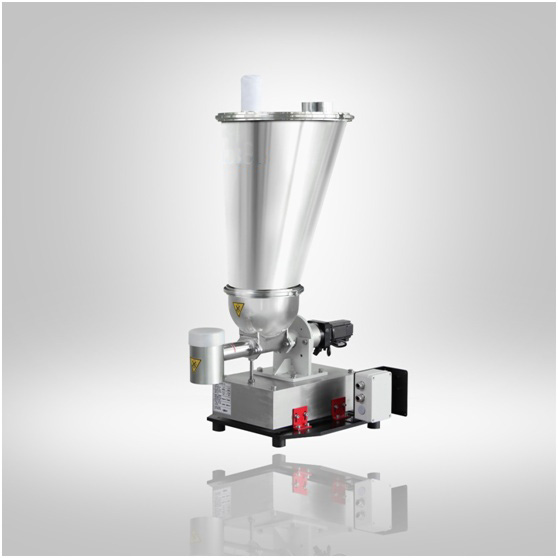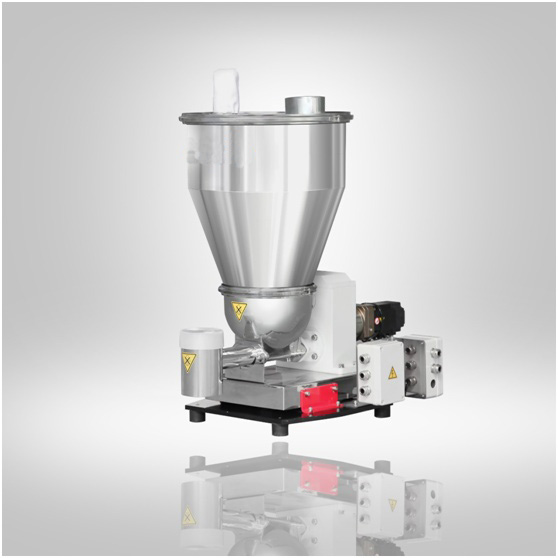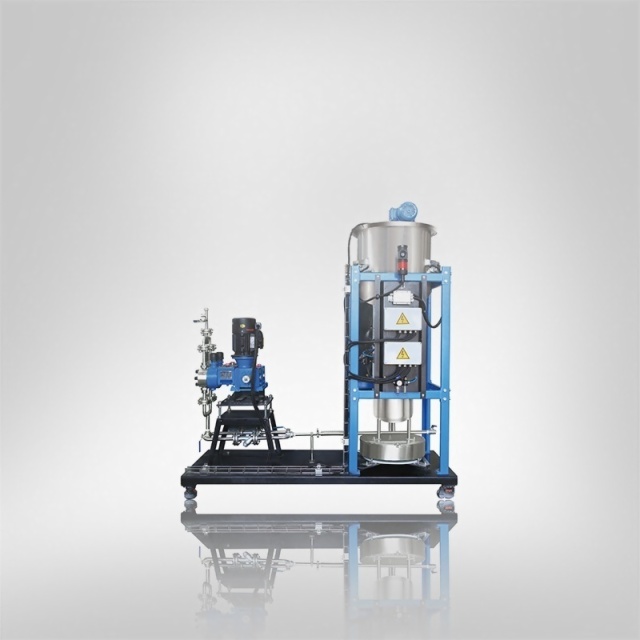Gravimetric Feeder (Loss In Weight Feeder)
A gravimetric feeder, also known as a loss-in-weight feeder, is a self-calibrating dosing system that doses based on weight in speed. A volumetric feeder, on the other hand, does this based on volume in speed. In gravimetric dosing, the weight of the dosed additive is measured using a load cell that is the foundation of the entire system. Weight is calculated using loss-in-weight technology, which measures the reduced weight while dosing

R Type Single Screw Gravimetric Feeder
1. The single feedback control feeding technology is adopted, which eliminates the problems of PLC signal acquisition lag, slow running speed, and poor anti-interference performance, and increases the speed feedback, and the feeding accuracy and stability are higher.
2. The feeding part is easy to disassemble, easy to clean, replace and maintain.
3. Different models adopt a universal screw interface, which can easily replace different types of screws, and realize a wider feeding range of one equipment.
4. The accuracy can reach ±0.5%.

R Type Twin Screw Gravimetric Feeder
1. The single feedback control feeding technology is adopted, which eliminates the problems of PLC signal acquisition lag, slow running speed, and poor anti-interference performance, and increases the speed feedback, and the feeding accuracy and stability are higher.
2. The feeding part is easy to disassemble, easy to clean, replace and maintain.
3. Horizontal stirring plus optional vertical stirring design, with high anti-bridging performance.
4. Different models adopt a universal screw interface, which can easily replace different types of screws, and realize a wider feeding range of one equipment.
5. The accuracy can reach ±0.5%.

Liquid Gravimetric Feeder
1. The storage tank is equipped with a material level control switch, which can directly monitor the liquid level of the internal raw materials.
2. The unique design achieves the purpose of stable high-pressure delivery.
3. According to the needs of different users, there are a variety of power transmission methods and operation methods.
4. There are three kinds of explosion-proof methods: heating device explosion-proof, motor explosion-proof, and mechanical structure explosion-proof.
5. There are three heating methods: electric heating, water heating, and oil heating.
6. High-quality thermal insulation material, high sealing design, avoid unnecessary energy loss, and accuracy can reach ±0.5%.

